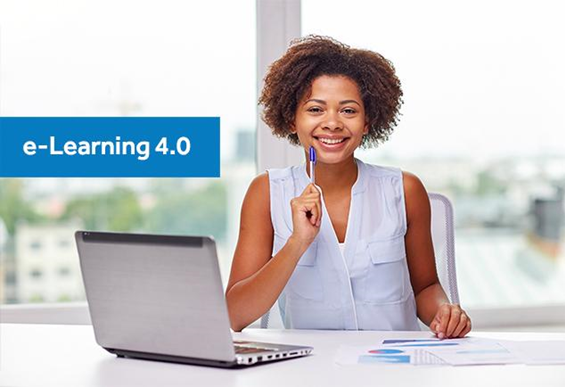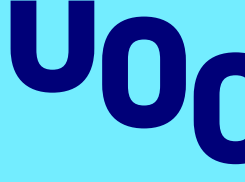
Ana Pérez
An Adaptive Trust e-assessment System for assuring e-assessment Processes in online and blended Environments
Reading time: 7 minutes
This series is offered by researchers, science communicators and academic staff working together to bring you into closer contact with science. The “Dive into Science Week with UOC Researchers” series combines the UOC’s online expertise with the offline events organized for Science Week to create an online slow-reading experience. For Science Week 2017, we’ll share scientific knowledge on e-learning, eHealth, digital humanities, and ICTs in social science. Today we highlight the eLearning research carried out through the Horizon 2020-funded TeSLA project.
About TeSLA
The TeSLA project provides educational institutions with an adaptive trust-based e-assessment system for assuring e-assessment processes in online and blended environments. It supports both continuous and final assessment, improving the level of trust among students, teachers and institutions. As part of its development, the system takes into account quality assurance agencies in education, privacy and ethical issues and existing educational and technological requirements throughout Europe.
The TeSLA project adheres to interoperability standards so that it can be integrated into different learning management systems (LMS), providing a scalable and adaptable solution. It is a two-year project (2016-2018). We are currently past the midpoint of the project, during which time the system has reached a level of maturity and readiness that has allowed it to be tested by eight academic institutions from the consortium. New institutions will take part in the second round of the third pilot test. Watch this practical video on how TeSLA works.
Innovation in e-learning
The TeSLA project has been categorized as an innovative action within the European Commission and its Horizon 2020 programme.
Online education has evolved quickly these last twenty years. Much has changed since the ‘90s, when the first online training courses started to be offered as part of the so-called e-Learning 1.0, until today.

If e-Learning 1.0 was focused on static web pages that only offered proprietary content, the change of millennium (the year 2000) marked a revolution with the advent of e-Learning 2.0, which began to dazzle us with the first wikis, blogs and podcasts, where students and teachers timidly began to exchange information and knowledge.
Starting in 2010, new technologies in mobility and the tremendous rise of social media gave a new impetus to online training, thus creating the e-Learning 3.0 concept. In this new scenario, students were at the centre of education for the first time and their satisfaction played a key role.
Content is now dynamic and the interaction among all the members of the learning community is crucial to everyone’s educational enrichment. This is where the concept of the flipped classroom (2007) takes on whole new meaning.
However, many of today’s institutions are still using a 2.0 education model. In terms of interoperability, proof of this can be found, for example, in the massive use of the SCORM standard when, for years now, new, more powerful and complete standards like TinCan (xAPI) have been recognized by the IMS Global Learning Consortium.
Horizon 2020 opens the door to a new, and revolutionary educational model: e-Learning 4.0.
Within the scope of e-learning, e-assessment has evolved led by the need of both the educator and the student to go a step further. In order to strengthen technology and align it with social evolution, new systems such as TeSLA are coming into their own in order to attend to these needs and this evolution, breaking social, physical and geographical barriers and allowing students to take tests at any time, in any part of the world.
In this context, institutions will not only need to use traditional LMS, but also an entire learning ecosystem, where mobility, statistics and predictive analysis, personalized learning paths, gamification and, of course, trust-based e-assessment authorship tools will be the pillars on which the future of e-learning is built.
Today only the most visionary and innovative institutions are taking on these challenges in order to make the leap to the world of 4.0. For institutions such as these, the TeSLA project is the model to follow to promote and raise awareness of the way in which the world learns and make e-Learning 4.0 a reality.

The most innovative technology in e-assessment for online education has been developed for the TeSLA project, as this is the area of e-learning on which any developments are based.
E-assessment in TeSLA
The TeSLA system facilitates e-assessment by offering a series of authentication and recognition instruments for students taking an exam. It provides innovative elements to aid in this evolution. These instruments are:
- Face recognition: face recognition and verification and presentation attack detection.
- Voice recognition: automatic speaker verification and presentation attack detection.
- Plagiarism analysis tool.
- Authorship verification.
- Keystroke dynamics.
The TeSLA system will use these instruments to verify authentication and authorship during local and remote examinations. For authentication purposes, the available instruments cover face detection and verification, voice verification and keystroke dynamics. Face presentation attack detection (FPAD) and voice presentation attack detection (VPAD) aid the face detection and verification instrument as well as the voice verification instrument in detecting attempts at cheating. For authorship verification, a plagiarism detection instrument (PACPlagi) and an authorship recognition instrument are available. All these instruments combined will enable a reasonable identification of the student and whether his or her document is authentic or not.
The system is also being developed taking into account privacy issues, in order to provide a secure platform, ensuring the identity of both teachers and students. Personal data is processed by the platform, which collects data to identify users (students, teacher, etc.) and process the information to guarantee the identity of these users and reduce as much as possible the chance of any cheating taking place during the exam.
Impact & benefits
The TeSLA system makes the security and privacy disadvantages and barriers of online evaluation systems disappear. The system also exceeds the requirements and advantages of online examination systems, covering the gaps present in other online examination or e-assessment systems.
The TeSLA system follows interoperability standards, meaning it can be integrated into different learning environments. It is also being developed to reduce the current restrictions in time and physical space in teaching and learning, which opens up new opportunities for learners with physical or mental disabilities while also respecting social and cultural differences.
Easy access. Students and instructors can configure the exam and assessment in one step. It is a snap for the student taking the exam. The instructor configures the e-assessment before configuring the test that the student is going to take and this process is completed by the student before starting the same test.
Geographical barriers. This kind of inclusive e-assessment system breaks down the geographical barriers of institutions, expanding their examinations beyond the classroom with a high degree of compliance. It also allows students to take exams in any part of the world, helping to balance their personal/professional and academic life.
Accessibility. TeSLA e-assessment caters to learners with disabilities and those in need of special accommodations by allowing them to take assessments from the comfort of their own home and at their convenience.
Student verification. The TeSLA system enables complete verification of test taker identity. Following the test, the assessment percentage is sent to the instructor.
Cheating is not a problem. Thanks to the instruments developed, computer-based assessment also prevents cheating during the examination.
Security. It maintains test integrity, protecting against cheating and allowing secure testing to take place anywhere.
Geographical scope
The TeSLA consortium is composed of higher education institutions and research centres in collaboration with technological companies as well as quality assurance agencies. It comprises 18 partners: 8 universities, 3 quality agencies, 4 research centres and 3 companies.
The geographical distribution of TeSLA partners has made it easier to account for geographical diversity in implementing TeSLA’s first pilot tests, taking place in different countries around Europe. Given the innovative approach of the project, the current gap in e-assessment and the growing number of institutions interested in offering online education, the project will conduct large-scale pilot tests to evaluate and assure the reliability of the TeSLA system.

Different dissemination actions and communication activities have been carried out during the life of the project by consortium members in order to introduce the project not only throughout Europe but also around the world.
The TeSLA project is led by the Universitat Oberta de Catalunya (UOC). This institution not only manages the day-to-day activities of the project but also spearheads data privacy issues, dissemination and technical, legal and quality aspects involved with the project. The UOC has also contributed to the project with indispensable tools such as conceptual maps, an anti-plagiarism instrument.
This article was written by Ana Pérez, Project Manager at ProtOS Soluciones Educativas, lead of the work on communication, dissemination, liaisons and exploitation in the TeSLA project.
